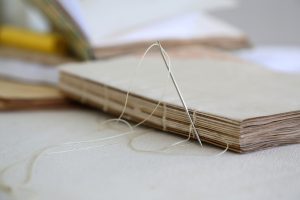Choose a Book Format Your Manuscript
 It may sound simple enough, but picking out the right book format can be difficult, especially when you’re self-publishing. The elements of formatting and design can be difficult for a new author, particularly one that doesn’t have much experience with design work. It can get a little overwhelming, but DiggyPOD strives to make it as easy as possible for you to achieve the exact look and feel you’ve always wanted. With comprehensive how-to guides, Word to PDF converters, and state-of-the-art printers, your draft goes from manuscript to printed book in no time.
It may sound simple enough, but picking out the right book format can be difficult, especially when you’re self-publishing. The elements of formatting and design can be difficult for a new author, particularly one that doesn’t have much experience with design work. It can get a little overwhelming, but DiggyPOD strives to make it as easy as possible for you to achieve the exact look and feel you’ve always wanted. With comprehensive how-to guides, Word to PDF converters, and state-of-the-art printers, your draft goes from manuscript to printed book in no time.
How to convert your manuscript into a book format
More likely than not, your book is currently two hundred pages of a Microsoft Word Document. And while there is a book format template in Word, in order for your manuscript to print properly, it must be properly converted to a PDF. Luckily, we’ve got you covered with our Word to PDF Book Conversion Tool. This is how to format your book for self-publishing at DiggyPOD. We try to make it as easy for you as possible. After the book is correctly formatted for print, you must decide on how it’s going to look.
Book Paper types
One of the first decisions you’re going to make is what kind of paper you’re going to print on. This is crucial. How the paper looks and feels will determine how a reader feels about the book. DiggyPOD overs a variety of paper types to accommodate all types of books:
- 50# White Offset: typically used for books that only have type and no photos in the copy.
- 60# White or Natural (cream-antique looking color) Offset: best for type and photos
- 70# White Offset: best when you want a little thicker paper and have solid ink coverage to help with bleed through
- 80# Gloss Text: best used when you want your photos to look sharp and pop on the page
What type of book you’ve written will delegate what type of paper will work best. For instance, the 80# Gloss Text is best in books that heavily utilize photographs—such as yearbooks or genealogies.
Book Binding Types
The next step in the printing process is choosing the right binding for your book. Now, if you’re writing fiction or poetry, you’ll probably want to stick to perfect binding. However, choosing between hardcover or paperback is entirely a stylistic choice. It depends on what you like. Both are perfectly good options. In traditional publishing, hardcover is usually reserved for newly released books, but self-publishing has no rules. Your book binding is entirely your choice—not the choice of your agent, your editor, or your publisher.
The Book Cover
You know that saying “you can’t judge a book by its cover”? Well, we have to disagree. The cover is one of the most important parts of your book. It’s the first thing people see. That’s why we exclusively use Gloss Layflat Laminate when creating gloss laminated book covers. Gloss Layflat Laminate provides superior protection for your book – not only does it leave your book with a professional, high-gloss look, it also keeps it safe from spine cracking.
Perhaps the most important aspect of book design is the front cover. There are the basics: a basic book format includes the title, author’s name, and an image of some sorts on the cover. The image is the most important factor: you want something that represents your book well but doesn’t give everything away. It must simultaneously draw the reader in and make them wonder what they’ll find. It serves as an invite, a promise, and a small taste of what lies within. Finding this image can undoubtedly be difficult. We recommend looking at some of your favorite books to get book cover design ideas. What is it about their covers that you like? Try to emulate that.
Once you have the cover, you’ll be ready to print. Just like that! From putting your book into a book format template to picking it’s design, this process is made all the easier by the dedication and ease DiggyPOD provides for its customers. You’ll probably even have fun formatting your book for self-publishing.
2 Comments
Leave a Comment
You must be logged in to post a comment.

[…] Formatting your self-published novel […]
[…] How to Format Your Book for Self-Publishing […]